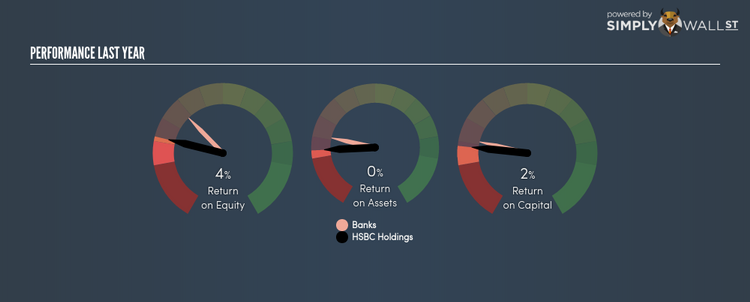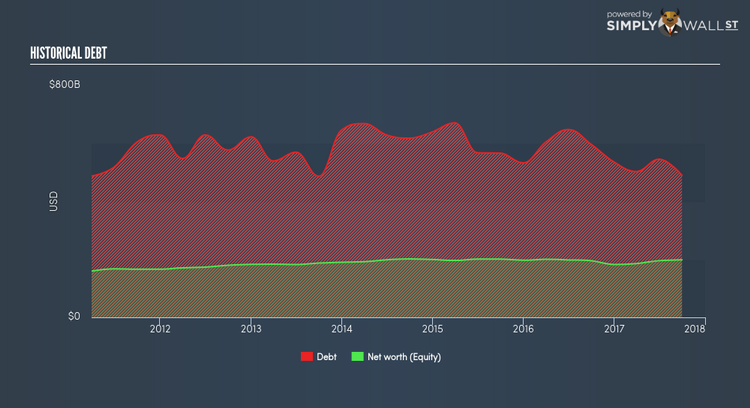With A Recent ROE Of 3.82%, Can HSBC Holdings plc (NYSE:HSBC) Catch Up To Its Industry?

HSBC Holdings plc (NYSE:HSBC) delivered a less impressive 3.82% ROE over the past year, compared to the 8.93% return generated by its industry. Though HSBC’s recent performance is underwhelming, it is useful to understand what ROE is made up of and how it should be interpreted. Knowing these components can change your views on HSBC’s below-average returns. Metrics such as financial leverage can impact the level of ROE which in turn can affect the sustainability of HSBC’s returns. Let me show you what I mean by this. View our latest analysis for HSBC Holdings
Breaking down Return on Equity
Return on Equity (ROE) is a measure of HSBC Holdings’s profit relative to its shareholders’ equity. An ROE of 3.82% implies $0.04 returned on every $1 invested. While a higher ROE is preferred in most cases, there are several other factors we should consider before drawing any conclusions.
Return on Equity = Net Profit ÷ Shareholders Equity
Returns are usually compared to costs to measure the efficiency of capital. HSBC Holdings’s cost of equity is 12.32%. This means HSBC Holdings’s returns actually do not cover its own cost of equity, with a discrepancy of -8.50%. This isn’t sustainable as it implies, very simply, that the company pays more for its capital than what it generates in return. ROE can be dissected into three distinct ratios: net profit margin, asset turnover, and financial leverage. This is called the Dupont Formula:
Dupont Formula
ROE = profit margin × asset turnover × financial leverage
ROE = (annual net profit ÷ sales) × (sales ÷ assets) × (assets ÷ shareholders’ equity)
ROE = annual net profit ÷ shareholders’ equity
Essentially, profit margin shows how much money the company makes after paying for all its expenses. Asset turnover shows how much revenue HSBC Holdings can generate with its current asset base. And finally, financial leverage is simply how much of assets are funded by equity, which exhibits how sustainable the company’s capital structure is. Since ROE can be inflated by excessive debt, we need to examine HSBC Holdings’s debt-to-equity level. At 246.76%, HSBC Holdings’s debt-to-equity ratio appears relatively high and indicates the below-average ROE is already being generated by significant leverage levels.
What this means for you:
Are you a shareholder? HSBC’s ROE is underwhelming relative to the industry average, and its returns were also not strong enough to cover its own cost of equity. Additionally, with debt capital in excess of equity, the existing ROE is being generated by debt funding, which is something you should be aware of before buying more HSBC shares. If you’re looking for new ideas for high-returning stocks, you should take a look at our free platform to see the list of stocks with Return on Equity over 20%.
Are you a potential investor? If you are considering investing in HSBC, looking at ROE on its own is not enough to make a well-informed decision. I recommend you do additional fundamental analysis by looking through our most recent infographic report on HSBC Holdings to help you make a more informed investment decision.
To help readers see pass the short term volatility of the financial market, we aim to bring you a long-term focused research analysis purely driven by fundamental data. Note that our analysis does not factor in the latest price sensitive company announcements.
The author is an independent contributor and at the time of publication had no position in the stocks mentioned.


